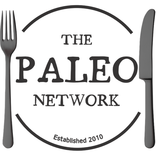10 Things You Didn’t Know About Offal
You’re read about how offal is a true super food, packed with nutrients. Perhaps you use it regular in your cooking, maybe you've tried my chicken liver pate recipe? Here are ten little know facts about organ meats…
1. There are two types of offal, red offal and rough offal. Red offal refers to the parts of the animal above its diaphragm, such as the heart, lungs, spleen, ox tail, skirt, sweetbread and gullets. Rough offal is the name given to the parts of cattle from the rumen area, i.e. intestines, tripe, heads and heels.
2. The liver of Polar bears is very dangerous to humans, being far too high in Vitamin A. Indiginous populations never eat Polar bear livers. Seal livers are equally toxic.
3. Similarly the internal organs of the fugu pufferfish are very toxic – and if not prepared properly can be fatal.
4. Skirt (i.e. onglet steak or hanger steak) gets it’s unique savory taste from it’s close proximity to the diaphragm and kidneys.
5. Sausage skin is traditionally made from the intestines of sheep, pig or ox.
6. Demand for offal is far greater in the winter months, whilst in the summer relatively little is sold – this makes the summer months a good time to get cheaper prices.
7. Whilst the term offal used to just refer to the entrails, it is now taken to mean all of the insides, abdominals and extremities. The terms “organ meats” and “variety meats” are also used instead of offal.
8. The word “offal” comes from “off fall”, and literally refers to the pieces of the animal that fall away as the carcass is butchered.
9. Offal from birds is known as giblets.
10. If you find the taste of offal a bit much (and tolerate dairy), try soaking it in milk overnight before cooking it.
What do you think of offal? Do you eat it regularly – and what is your favourite type?



